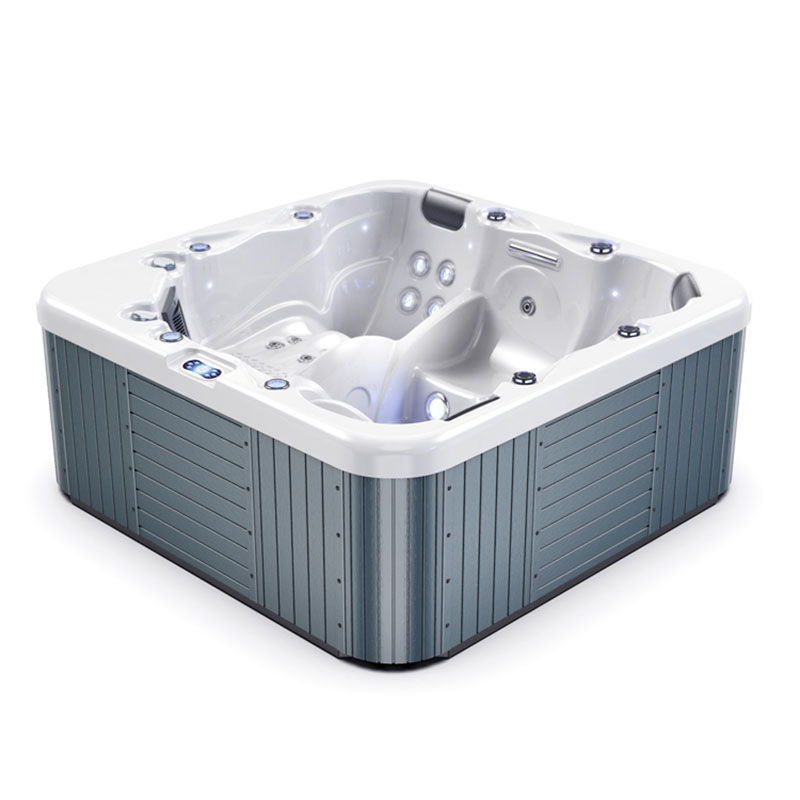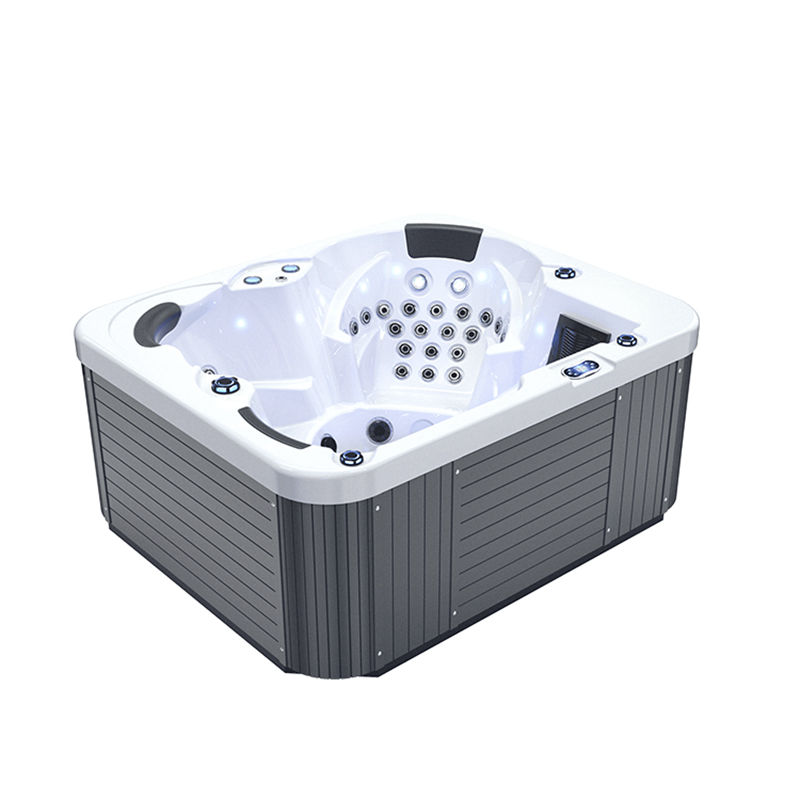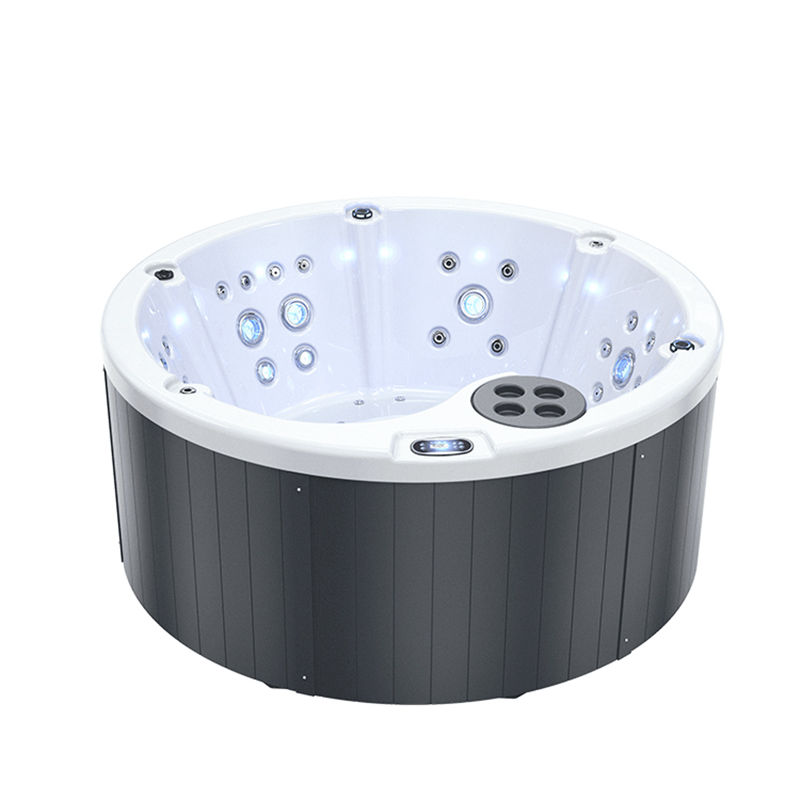Hot tubs provide a comfortable leisure environment for many families, especially after a busy day at work, a hot tub can relax the body and relieve fatigue. There are many types of hot tubs on the market, among which plug and play hot tubs have attracted widespread attention due to their convenient installation method. As the name suggests, plug and play hot tubs do not require complicated water and electricity installation, and can be used by simply plugging them into a normal power source. However, many consumers are concerned about their operating costs, believing that the convenience of plug and play hot tubs may be accompanied by higher energy consumption and maintenance costs.
This article will conduct an in-depth discussion on the operating costs of plug and play hot tubs, analyze their economic benefits from the perspective of energy consumption, maintenance costs, and other related costs in long-term use, and help consumers understand the true cost of this type of hot tub in actual use.
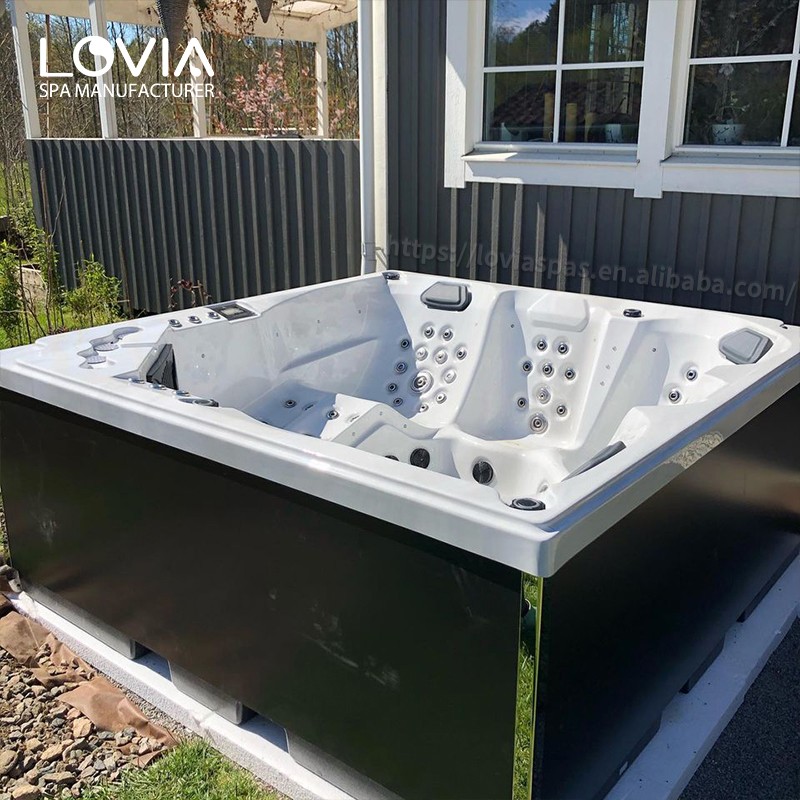
Do plug and play hot tubs have high energy consumption?
The plug and play hot tubs are designed to be convenient. Users only need to use it through a standard power socket, which saves a lot of electrical modification costs during the initial installation. However, does this simple power design mean that it will consume more energy during operation? To answer this question, we need to have a deeper understanding of the operating mechanism of plug and play hot tubs.
Heating efficiency and power supply limitations
A core feature of plug and play hot tubs is that they use a standard 220-volt power outlet. Although this design is convenient, the power supply is relatively small compared to traditional hot tubs. Traditional hot tubs usually use higher voltage systems (such as 240 volts) to support more powerful heaters, which means that they can heat the water to the desired temperature in a shorter time. However, plug and play hot tubs have a relatively longer heating time due to power supply limitations.
● Slower heating speed: Due to the limited power of the plug and play hot tubs heater, the heating speed is slower. For example, a traditional hot tub may take several hours to raise the water temperature to the ideal 104°F, while a plug and play hot tub may take longer. This means that energy consumption during heating is longer.
● Longer continuous heating time: Although plug and play hot tubs have less heating power, the system may activate the heater more frequently to maintain a constant water temperature, especially in cold seasons or when the outside temperature fluctuates greatly.
Temperature control and insulation effect
The operating cost of a hot tub depends largely on its insulation performance. If the hot tub can maintain the water temperature efficiently and reduce heat loss, the heater can be operated less frequently, thereby reducing energy consumption.
● Importance of insulation: High-quality plug and play hot tubs usually use better insulation materials, such as multiple insulation layers and thicker tub covers to reduce heat loss. Although the heating speed is slow, once the target temperature is reached, good insulation performance can effectively prolong the water temperature retention time and reduce energy waste.
● Seasonal factors: In cold seasons, plug and play hot tubs may require more energy to maintain water temperature, especially when used outdoors. Although better insulation performance can alleviate some of the energy consumption, long-term heating is still an energy cost that cannot be ignored.
Monthly Energy Cost Estimates
Based on typical usage, the monthly energy consumption of a plug and play hot tub depends on several factors, including the size of the tub, how often it is used, the ambient temperature, and the quality of the insulation. A typical plug and play hot tub, used for about an hour per day, may add $30 to $60 to your monthly electricity bill.
● Effect of size and water volume: Larger plug and play hot tubs hold more water, so more energy is required to heat the larger body of water. If you choose a larger tub, be prepared for higher energy costs.
● Effect of usage habits: The time of day you use the hot tub, how often you use it, and the temperature you heat the tub to will also affect operating costs. Frequent use and higher water temperature requirements will increase overall energy consumption.
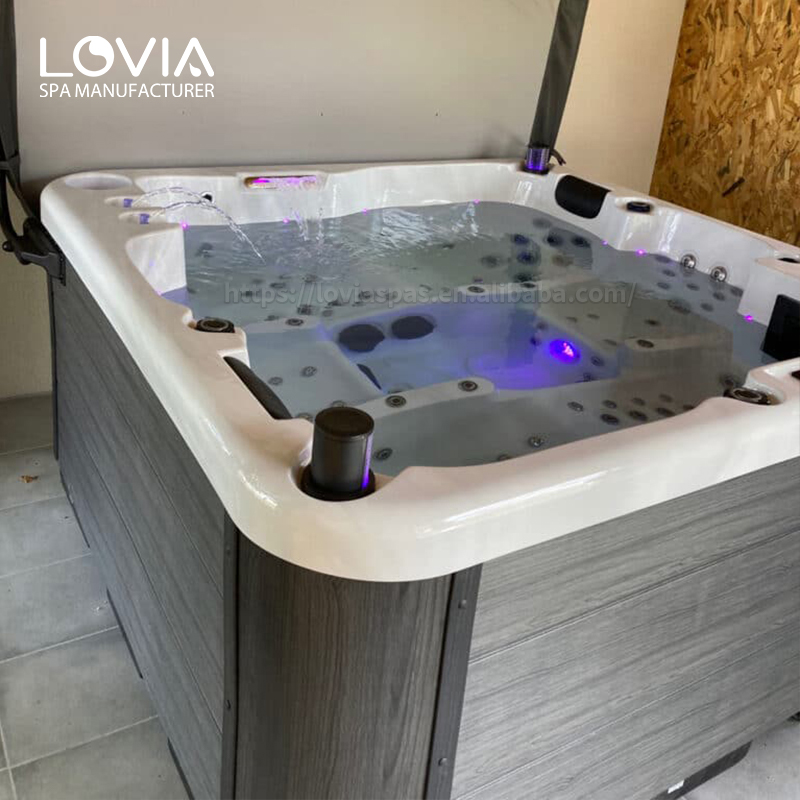
How much does a plug and play hot tub cost to maintain?
Although plug and play hot tubs are less expensive to install initially, daily maintenance is also a cost component that cannot be ignored. Hot tub maintenance mainly includes water quality management, equipment maintenance, and parts replacement.
Water management costs
To ensure the water quality of plug and play hot tubs is clean, chemicals are regularly applied to balance the pH of the water, keep the water clear, and prevent bacterial growth. Common chemicals include chlorine, bromine, pH adjusters, and water stabilizers.
● Chemical costs: Monthly chemical costs range from about $20 to $40, depending on how often the tub is used and how much water is in it. More chemicals are needed to maintain water quality when the tub is used more frequently.
● Filter replacement: The filter is one of the most important components to ensure clean water quality. The filter of a plug and play hot tub needs to be cleaned and replaced regularly to prevent dirt from accumulating. Generally, the cost of replacing the filter ranges from $20 to $50 every 3 to 6 months.
Regular maintenance and inspections
Maintenance of plug and play hot tubs is relatively simple and usually does not require complex inspections by professionals. However, the water pump, heater, and other electronic components of the tub still need to be checked regularly to ensure the equipment is functioning properly and extend its life.
● Self-maintenance costs: If users have a certain level of hands-on ability, they can complete most of the daily maintenance by themselves, including cleaning the filter, draining the tub, and adjusting the water quality. This can effectively reduce maintenance costs.
● Professional maintenance costs: In a few cases, a hot tub may require the help of a professional maintenance person. For example, when there is a problem with the electrical system or heater, the repair cost may be high, with a one-time repair cost of between $100 and $300.
Economical long-term maintenance
In the long run, the maintenance cost of plug and play hot tubs is slightly better than that of traditional hot tubs. Due to its simplified design, it does not require a complex water and electricity plumbing system, nor does it require dedicated power line support, which to a certain extent reduces the maintenance complexity and related costs of the equipment.
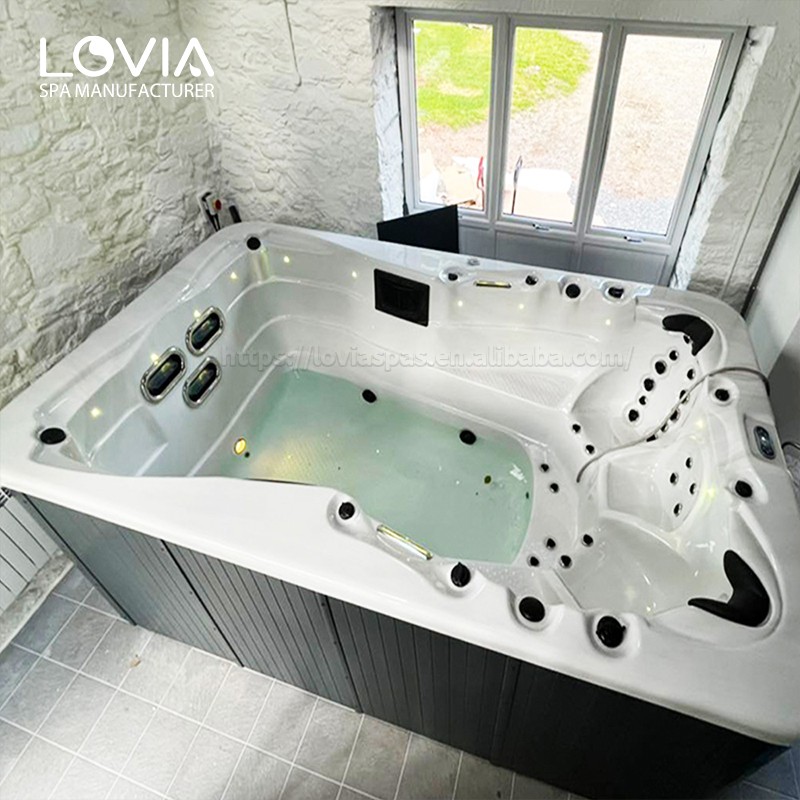
Comparison and analysis: What is the cost difference between plug and play and traditional hot tubs?
The convenience of plug and play hot tubs saves a lot of cost when purchasing and installing, but does it cost more to run than traditional hot tubs? To better understand the difference between the two, we need to compare their total costs, including initial cost, installation cost, running cost, and long-term maintenance cost.
Initial and installation costs
● Plug and play hot tubs: Since they do not require specialized water and electricity lines and professional installers, the installation cost is relatively low. Users only need to choose a suitable location and plug in a standard power source to start using. The initial purchase cost is relatively moderate, with most plug and play hot tubs costing between $2,000 and $6,000.
● Traditional hot tubs: Traditional hot tubs usually require professional installation, which involves the layout of power lines, water pipes, and other infrastructure. These additional installation costs may range from $500 to $2,000, depending on the installation conditions and the type of tub. The initial price range of traditional hot tubs is wider, ranging from $3,000 to $15,000.
Comparison of operating costs
From an energy consumption perspective, plug and play hot tubs have a lower heater power, and although they take longer to heat up, their energy consumption is not much different from that of traditional hot tubs under certain usage conditions. Traditional hot tubs heat up faster in a short period of time, but due to their higher power, they also require more electricity in a short period of time. Therefore, the difference in energy costs between the two is small, mainly depending on usage habits and the insulation performance of the equipment.
Comparison of long-term maintenance costs
In terms of maintenance, the design of plug and play hot tubs simplifies many complex equipment, which makes its long-term maintenance cost relatively low. Traditional hot tubs may require more professional maintenance services during long-term use due to the involvement of more equipment and pipes.
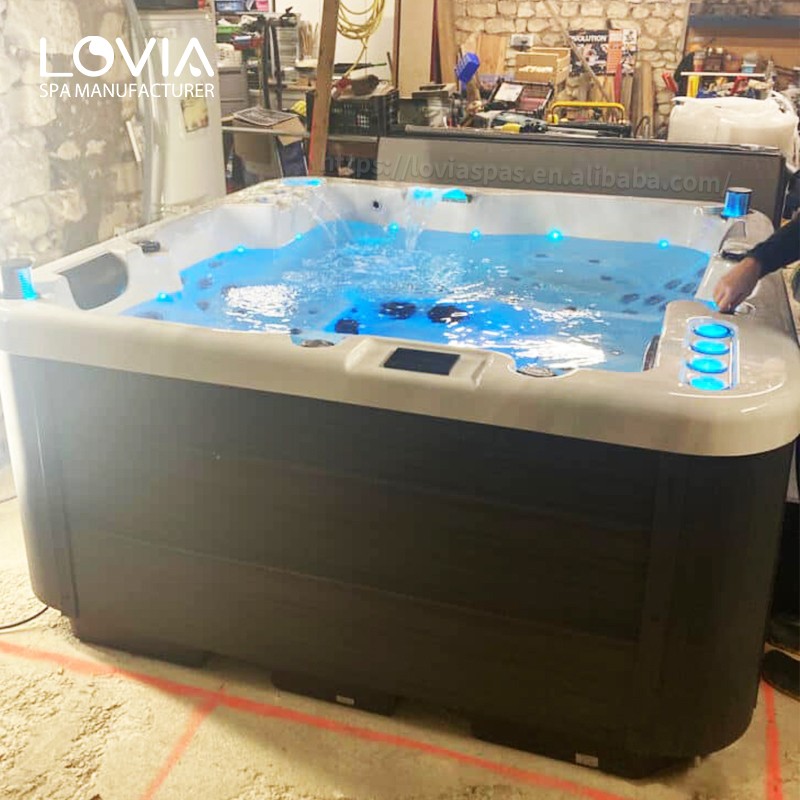
Can Lovia Spa handle bulk international orders and shipping?
Absolutely. Lovia Spa is experienced in handling large-scale international orders, with efficient production and logistics teams. We work closely with global distributors to provide bulk purchasing options at low costs. Whether you’re importing for a retail chain or a hotel project, our factory ensures high-quality supply and timely delivery. Benefit from our wholesale prices and international freight support tailored to your market.


